Winter is often thought of as the time of year to escape the harsh elements and head indoors to get cozy. Most plants are dormant, and the garden is a much more subdued place than in the spring and summer, when there's all that vibrant and budding color. But don't dismiss your garden in the off season. It is within this sedate atmosphere that tree form and structure take center stage, and a whole new level of interest can be gained.
Evergreen trees are the obvious stars of the winter landscape because they provide structure year round, but many deciduous options have interesting bark and a beautiful branch form.
When planning a site for your winter-interest tree, think of an area of your garden where the surrounding plantings are mostly herbaceous so your feature tree can show its true colors and isn't blocked by foliage.
Here are some of my favorite winter trees.
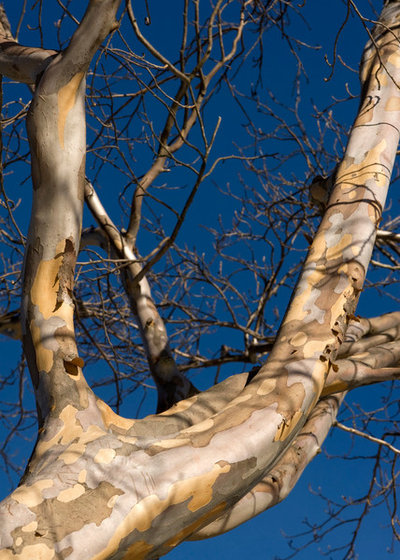
The New York Botanical Garden
Stewartia PseudocamelliaPeeling bark takes several different forms, and Stewartia has one of the more unique appearances. As older bark flakes off, a gray, brown and pale red patchwork effect appears on the trunk of the tree, creating an interesting contrast to snowy landscapes.
USDA zones: 5 to 9 (find your zone)
Soil requirement: Prefers acidic soil
Light requirement: Best in partial shade; will tolerate full sun with ample water
Size: Slow growing, to 30 to 40 feet
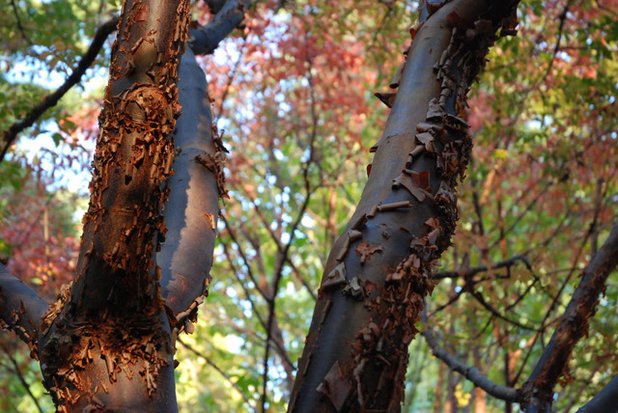
Matt Kilburn
Paperbark Maple(Acer griseum)The paperbark maple is another tree with interesting peeling bark. This slow-growing tree is well suited to small gardens and is an interesting focal point in the winter landscape because of its rich color and the tactile surface of its trunk.
USDA zones: 4 to 8
Soil requirement: All types as long as the soil is well drained
Light requirement: Full sun to partial shade
Size: Slow growing, to 20 to 25 feet
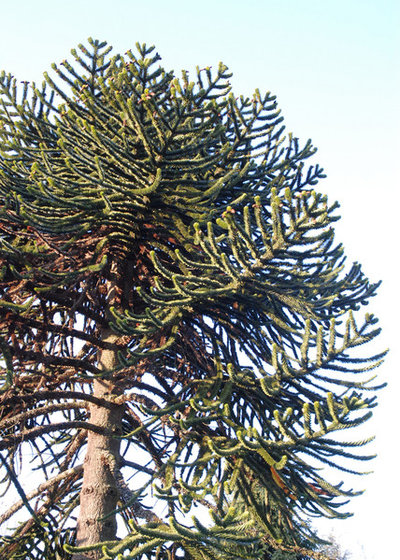
Matt Kilburn
Monkey Puzzle(Araucaria araucana)Speaking of focal points within a garden, a Monkey Puzzle tree can add unique texture to the landscape. The whimsical form of this tree will stand in sharp contrast (literally, because of the razor-sharp, scale-like leaves) to the snowy landscape, providing an exotic respite from the dog days of winter.
USDA zones: 7B to 10B
Soil requirement: Prefers well-drained acidic soil
Light requirement: Full sun
Size: Slow growing, to 30 to 40 feet
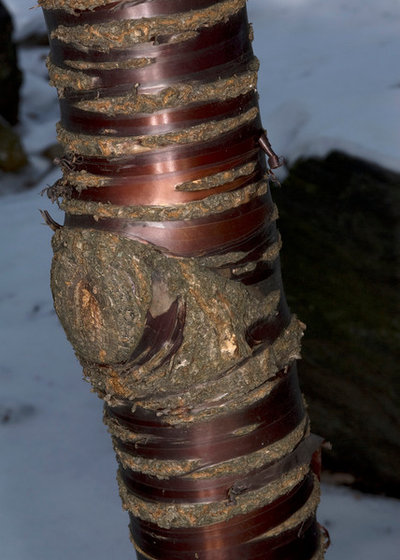
The New York Botanical Garden
Tibetan Cherry(Prunus serrula)The Tibetan Cherry is an interesting tree year round because of its shiny, silk-like bark. The rich coppery-red, smooth surface of the trunk comes to life in the winter garden as other colors fade. Its ease of growth makes it a great choice for novice gardeners.
USDA zones: 7 to 10
Soil requirement: All types as long as the soil is well drained
Light requirement: Full sun
Size: Slow growing, to 20 to 30 feet
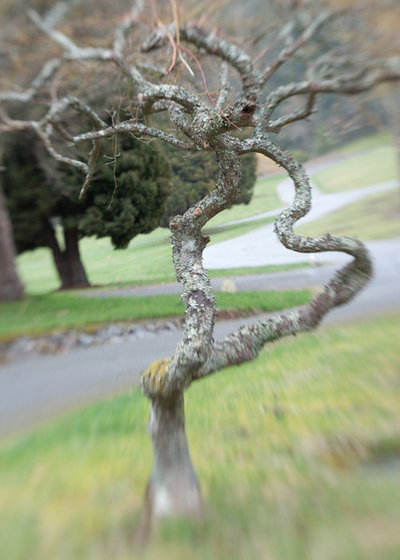
Matt Kilburn
Japanese Maples(
Acer palmatum spp)
Japanese Maples are a great addition to any garden because of the seemingly endless varieties available in various colors and sizes. Many have an amazing trunk and branch form that can be seen when all of the leaves are gone. I often enjoy these trees more in the winter because their gnarly, contorted branches have so much character.
USDA zones: Varies, but usually between 6 to 9
Soil requirement: All types as long as the soil is well drained
Light requirement: Varies, but usually full sun to partial shade
Size: Varies, but usually slow to medium growth, to 15 to 20 feet
Photo by Scott Cutler; used with permission
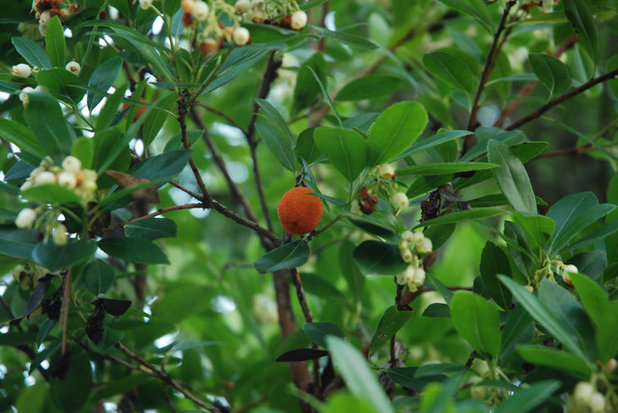
Matt Kilburn
Strawberry Tree(Arbutus unedo)Strawberry tree is a wonderful addition to sunny sites that flowers in the late fall and then produces bright red, round fruit throughout the winter months. The fruits are actually edible (although they're an acquired taste!) and are great for holiday wreaths and bouquets. This evergreen specimen is classified as a shrub but over the years can be pruned into a small tree form.
USDA zones: 6 to 9
Soil requirement: All soil types
Light requirement: Full sun to partial shade
Size: Slow growing, to 20 to 25 feet
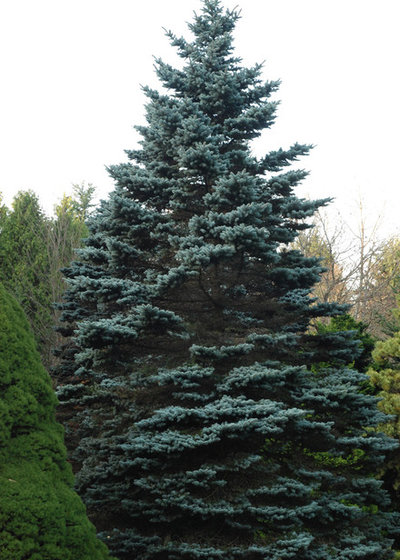
Matt Kilburn
Colorado Blue Spruce(Picea pungens)The Colorado Blue Spruce is a popular addition to many landscapes because of its vibrant gray-blue needles. This stately evergreen provides vertical structure to the garden year round but really stands out against a backdrop of snow and ice.
USDA zones: 2 to 7
Soil requirement: All soil types
Light requirement: Full sun
Size: Slow to medium growth, to 40 to 50 feet
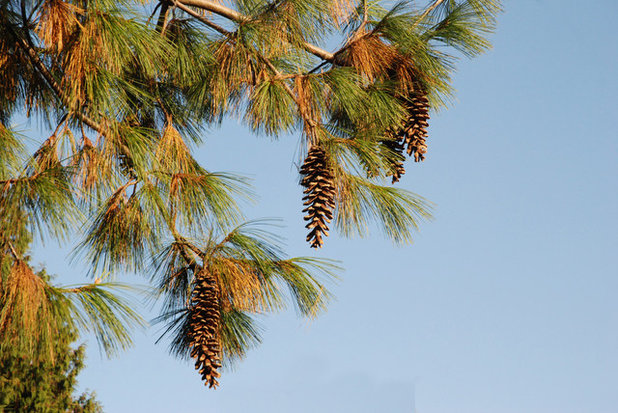
Matt Kilburn
Himalayan Pine(Pinus wallichiana)Many pine tree varieties produce amazing cones that add architectural interest to the landscape. This species is a Himalayan pine, a beautiful tree noted for its long needles and large, storybook-perfect cones.
USDA zones: 5 to 7
Soil requirement: All types as long as the soil is well drained
Light requirement: Full sun to partial shade
Size: Slow to medium growth, to 30 to 50 feet





